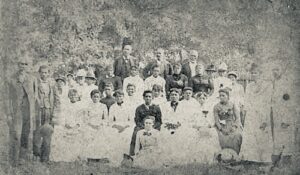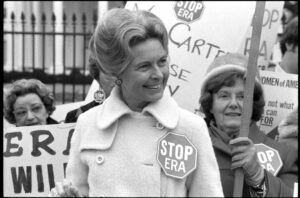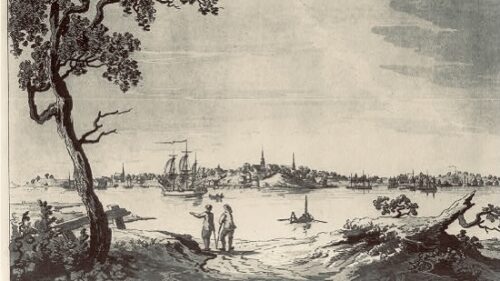
New Hampshire's Ratification of the Constitution
Article VII of the 1787 U. S. Constitution stated that once nine states had ratified, it would become “sufficient for the establishment of this Constitution between the states so ratifying the same.” Ultimately, New Hampshire achieved the honor on June 21, 1788, putting the Constitution into effect. But New Hampshire’s ratification was anything but straightforward. At first, approval seemed like a sure thing. Then, shockingly, it seemed that New Hampshire might be the first state to vote no. Delegates who gathered at the state convention in February 1788 met for only a week before suddenly adjourning—a decision that sent shock waves around the country and dismayed Federalists everywhere. When the convention reassembled in mid-June, no one could be certain about the outcome. So how—and why—did New Hampshire ultimately provide the decisive ninth vote? The answers reveal a circuitous path involving timing, expediency, and political skill. In short, New Hampshire illustrates the contingent nature of ratification. Defying expectations at several points, New Hampshire’s story proved all the more interesting because of its unpredictability.
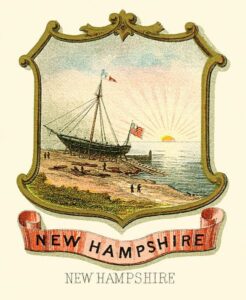
New Hampshire’s political habits and traditions were deeply rooted. Town government took priority since it was closest to the citizenry. Towns often sent instructions with their representatives indicating how they should vote. And the guiding political principle historically in New Hampshire was a constant jealousy of popular liberties. Any measure or constitution that seemed to threaten that sense of freedom consistently met with opposition. Opinions on the 1787 Constitution varied by location and occupation. Those closest to the coast in the populous Portsmouth area were strongly Federalist; generally, those in the central and backcountry parts of the state leaned Anti-Federalist. But Federalist strength extended beyond geography to influence. Merchants, the clergy, and newspaper editors all tended to support ratification and, given their potential for shaping public opinion, they carried outsized impact.
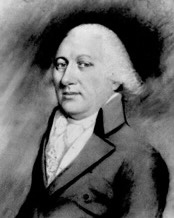
Federalists in New Hampshire were well-organized, influential, and confident about winning the vote for ratification—too much so initially, as it turned out. John Langdon, a delegate to the Constitutional Convention, and John Sullivan, the state’s chief executive (i.e. governor), were both bullish on ratification and they passed along their enthusiasm to their correspondents, fueling Federalist confidence around the nation. Langdon wrote George Washington on November 6, 1787, “I have not heard a single person object to the plan & very few find fault even with a single sentence, but all express their greatest desire to have it establish’d as soon as may be.” Acting on this optimism, New Hampshire Federalists called a special session of the legislature for December 1787 to set the dates for election of delegates, then scheduled the ratifying convention for Exeter in mid-February 1788. Anti-Federalists were forced to react but they succeeded—by arguing that the new Constitution endangered popular liberties—in securing elections of many known ratification opponents to the convention. Just as important, twenty-six towns who opposed ratification sent their representatives with instructions to vote “No.” Only four towns instructed their delegates to vote in favor.
Perhaps surprised by the depth of Anti-Federalist opposition and suddenly contemplating a much closer margin than they expected, Federalists scrambled to minimize potential damage by developing what historian Jere Daniell calls “a contingency plan” to adjourn the convention if the defeat of ratification seemed likely. Skillfully, they worked this escape hatch into three key rules: (1) no individual names would be attached to votes except that for adoption, giving those delegates who had been bound by instructions a way to vote in favor of adjournment undetected; (2) a motion to adjourn would supersede any other motion; (3) no vote could be take up again unless the number of delegates present was the same as on the initial vote, meaning that Federalists could prevent reconsideration of a previous vote simply by leaving the meeting.
The New Hampshire convention opened in Exeter on February 13, 1788 and began a section-by-section discussion of the Constitution. Four issues provoked extensive debate. Anti-Federalists, used to annual elections for members of the state legislature, opposed the two-year and six-year terms, respectively, for representatives and senators. They also believed that the Article I powers given to Congress stripped too much power from the state governments. The creation of a federal judicial branch sparked objections as well. Finally, many New Hampshirites agreed with their 1784 state constitution’s requirement that officeholding be restricted to Protestants and opposed Article VI which prohibited religious tests for public office. Generally, outspoken Anti-Federalists like Joshua Atherton, a loquacious lawyer from Amherst, voiced complaints about the Constitution. Then a slew of Federalists including Langdon, Sullivan, several ministers, and others, jumped in to rebut the criticisms and tried to allay the fears of their fellow delegates.
But while Federalists appeared to be making some headway on converting Anti-Federalists, several delegates who might have switched sides noted that they were bound by instructions and needed first to consult with their townspeople. A week into the convention, Federalists counted heads and feared they were behind and would lose if a vote were taken. Seeking to save face and buy more time, they invoked their contingency plan and carried a vote to adjourn the convention by 56-51. The meeting would resume in mid-June and be held at Concord.
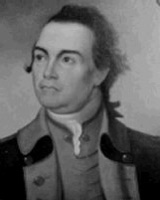
Humbled and shell-shocked, New Hampshire Federalists tried to explain. John Langdon now told George Washington that despite “the expectation of almost evry [sic] thinking man,” a small majority somehow coalesced against the Constitution. Sullivan argued that the margin was far greater—he estimated that approximately seventy delegates opposed ratification and suggested that Federalists had skillfully derailed a sure defeat by their maneuver to adjourn.
Embarrassed by this unexpected setback, unwilling to leave things to chance, Federalists swung into action. First, they continued their aggressive newspaper campaign, bombarding the press with articles favoring ratification. Next, they attacked Anti-Federalist critics, taking particular aim at Joshua Atherton, their imposing adversary at the Exeter convention, claiming that he had been a loyalist at the start of the Revolution and that his true objection to the Constitution was that by preserving American independence, it would foil any future British takeover. Other critics were attacked as self-interested men who opposed ratification because it would infringe on their own power as state officials, or were denounced for scandal or paper-money politics. Third, Federalists tried to maximize their membership by focusing on local elections. Some towns had not sent delegates to Exeter—elections were organized to favor Federalists in those places. Elsewhere, they challenged the credentials of some elected delegates and tried to replace them; in still other towns they organized efforts to remove or reverse negative instructions. The end result provided pro-ratification forces with six additional new votes. Lastly, they identified delegates who favored ratification themselves but whose towns were Anti-Federalist and devised a strategy of non-attendance at the Concord session rather than appearing and feeling compelled to obey instructions. This tactic could deny the Anti-Federalists several needed votes in what was expected to be a close contest.
In the three months since the February meeting adjourned, a combination of factors—the passage of time, the convention results in other states, and the exertions of Federalists—led to a considerably changed landscape when the convention resumed June 18. Suddenly, New Hampshire had the chance to become “The Keystone of the Federal Arch” if they could ratify before the Virginia convention, whose meeting overlapped, did so first. Only ninety of the 113 delegates attended; two-thirds of the absent delegates came from Anti-Federalist towns. Federalists seized the opportunity and pushed for a quick vote. Anti-Federalists could count heads as well, and they sought to minimize damage by insisting on conditional amendments prior to voting to ratify. Federalists opposed that motion and instead put forward a list of amendments to be recommended to the new Federal Congress after ratification. New Hampshire’s amendments were nearly identical to those of Massachusetts and focused on individual rights. Facing the inevitable, Atherton and some other Anti-Federalists moved for an adjournment “to some future day.” But that motion was defeated and then the main motion—to ratify the Constitution with recommended, not conditional, amendments—passed by ten votes, 57-47. The convention’s secretary even noted the exact time of the vote (1 p.m.), in anticipation of resolving any dispute over primacy, just in case Virginia voted to ratify on the same day.
Although it took longer and proved far more difficult than expected, New Hampshire ratified the Constitution for a host of reasons, perhaps none more decisive than the political skills of the Federalist majority. As historian Jere Daniell concluded, “Hard-nosed politics decided the issue. Federalists…simply outmaneuvered Antifederalists.” Once the debate subsided, the Constitution earned fast acceptance. Towns celebrated with parades, fireworks, dinners, and toasts. Portsmouth provided free liquor. Even some Anti-Federalists gradually came around—Joshua Atherton, though he remained personally skeptical, wrote a friend in February 1789, after state elections selected all Federalists to the new national government, that the general sense of the state seemed to be, “It is adopted, let us try it.”
The best-case scenario for New Hampshire Federalists would have been ratifying the Constitution expeditiously at the February meeting in Exeter and becoming the seventh state in the Federal pillar. The expectation was that Maryland and South Carolina would follow suit that spring, and that the combined momentum would have pressured New York and Virginia into ratifying. Their worst-case scenario would have been a defeat at the Exeter convention, representing the first “No” vote against the Constitution, which might have emboldened Anti-Federalists around the country. If critics could organize the opposition, New Hampshire might have been joined soon by North Carolina, Rhode Island, New York, and Virginia in reaching the five negative votes necessary to prevent adoption of the Constitution. As it unfolded, the events in New Hampshire fell somewhere in between. But had they not played out as they did, the Granite State would have lost the historic honor of becoming the decisive ninth state to ratify the Constitution.
SUGGESTED READINGS
Jere Daniell, “Ideology and Hardball: Ratification of the Federal Constitution in New Hampshire,” in Patrick T. Conley and John P. Kaminski (eds.), The Constitution and the States: The Role of the Original Thirteen in the Framing and Adoption of the Federal Constitution (Madison, Wisconsin, 1988), pp. 181-200.
Jurgen Heideking, The Constitution Before the Judgment Seat: The Prehistory and Ratification of the American Constitution (Charlottesville, 2012).
John P. Kaminski et. al. (eds.), The Documentary History of the Ratification of the Constitution volume 28 (Madison, Wisconsin, 2017).
Pauline Maier, Ratification: The People Debate the Constitution, 1787-1788 (New York, 2010).
Jean Yarbrough, “New Hampshire: Puritanism and the Moral Foundations of America,” in Michael Allen Gillespie and Michael Lienesch (eds.), Ratifying the Constitution (Lawrence, Kansas, 1989), pp. 235-258.

